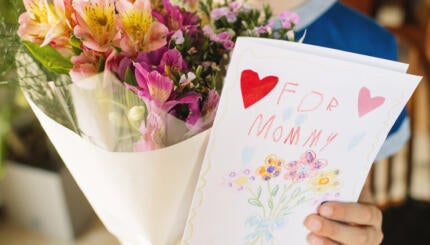A reflective student of Judaism might well ask, “So, Rabbi, do Jewish lifecycle ceremonies and rituals bring about transformation, or do they celebrate, reflect, and channel changes that are already taking place?” Her rabbi, whether a thoughtful teacher or a smart aleck, will most likely answer: “Yes.”
A baby is born, but ceremony functions to reinforced her identity for her family and community. A child reaches adolescence, but ritual reminds him and his congregation of his new responsibilities. A couple falls in love, but a ceremony under a wedding canopy transforms them from mere lovers to committed, covenantal partners. A person dies, but the preparation of his body for burial expresses core beliefs of his people–among them, that we are responsible for deep acts of caring for each other, that the human body is to be treated with sanctity, and that the transition from life to death has meaning.
By and large, since the destruction of the ancient temples with their functioning priesthood, Judaism does not have “sacraments” that must be carried out only by authorized individuals, and without which a person cannot be considered part of a covenantal community. A Jewish boy uncircumcised is still fully a Jew (albeit one not in compliance with traditional Jewish law); a Jewish girl at 12 or 13 who has not publicly celebrated becoming a bat mitzvah is still fully subject to all the expectations for a Jewish adult. Being born Jewish carries with it an identity that ritual can reinforce but does not create from whole cloth. (The case of conversion to Judaism is something of an exception: While conversion reflects a shift in identity and identification with the Jewish people that has often already taken place, since rabbinic times rituals have been necessary for a person to actually become a Jew.)
Jewish lifecycle ritual is a subset of ritual generally, which–among other things– communicates and strengthens group values and norms, helps relieve tensions in moments of transition, promotes family and group bonds, and provides public expressions for personal life passages. How does Jewish lifecycle ritual especially shape moments in our lives, and transform us? What else can it accomplish?
With your help, My Jewish Learning can provide endless opportunities for learning, connection and discovery.
At their best, Jewish lifecycle ceremonies can:
· Guide us to see the deeper meaning, even God’s presence, in the ordinary, and sanctify it.
· Help us to respond to life changes as more than biological or legal events, and enable us to sanctify our days and years.
· Tell us what to do and say at important moments.
· Bring us out of a focus only on self and family into connection with God, with the Jewish people, and with Jewish tradition.
· Connect us to the unseen presences of those who have come before us–and even those who will come after us.
· Foster not just personal or family identity, but also Jewish identity.
· Connect us with what we believe as a people to be of lasting and profound significance.
It is particularly striking the extent to which many requirements for Jewish lifecycle events reinforce finding personal and family meaning in the context of community. Ritual circumcision, marriage, recitation of the Mourner’s Kaddish–even celebrating becoming a bar or bat mitzvah in the context of congregational worship services as is very common in most communities–all these require a minyan, a quorum of 10, which transforms a group of Jews into a symbolic–and actual–community.
bat mitzvah
Pronounced: baht MITZ-vuh, also bahs MITZ-vuh and baht meetz-VAH, Origin: Hebrew, Jewish rite of passage for a girl, observed at age 12 or 13.
mitzvah
Pronounced: MITZ-vuh or meetz-VAH, Origin: Hebrew, commandment, also used to mean good deed.


